If you want to make an online store for your business, then this is the right post for you. Here you will get complete information about How to make an E-commerce website with WordPress.
WordPress is the most popular platform where you will be able to make an attractive and beautiful website for your business, without the need of any coding knowledge.
Developing an e-commerce website may appear like an overwhelming undertaking, but WordPress makes the process much more doable.
Regardless of your level of experience, WordPress provides all the resources and adaptability required to create a strong online store.
We’ll guide you through the process of creating an e-commerce website using WordPress in this post, making sure your site is both practical and aesthetically pleasing.
Table of Contents
Why Choose WordPress for Your E-commerce Website?
You should know why WordPress is a great option for your online store before you start learning how to make an e-commerce website with WordPress.
Not only is WordPress the most widely used content management system (CMS), but it is also very user-friendly and very adaptable.
Without any coding experience, you may build a distinctive and business-like e-commerce website using the thousands of plugins and themes that are available.
Benefits of Using WordPress
- User-Friendly Interface: Anyone can easily manage their website with WordPress thanks to its user-friendly interface.
- Customizable Themes: To give your website a distinctive appearance, select from thousands of free and paid themes.
- Comprehensive Plugin Library: Plugins for SEO, security, performance, and other areas can improve the functioning of your website.
- SEO-Friendly: WordPress was developed with best practices for search engine optimization in mind, which will raise your site’s search engine ranking.
- Big Community Support: It’s simple to locate materials and support because to the large community of users and developers.
Step by Step Guide: How to Make an E-commerce Website with WordPress
1. Choose a Domain Name and Hosting Provider
Choosing a domain name and a reputable hosting company is the first step to make an e-commerce website with WordPress.
Both your brand and your domain name should be easily recalled.
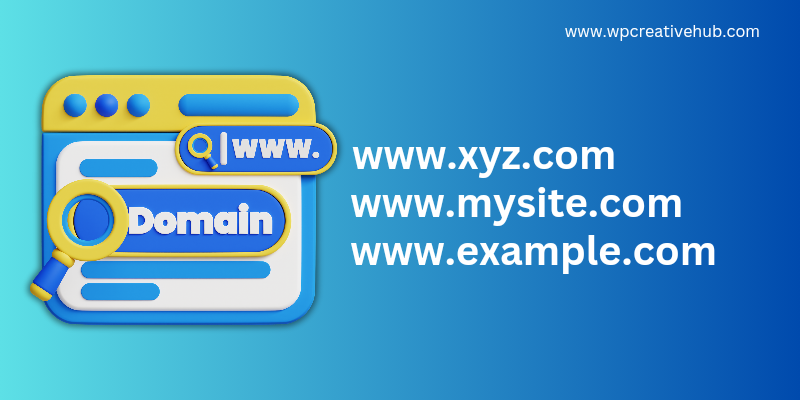
WordPress-specific hosting plans are available from hosting companies like Hostinger, SiteGround, Bluehost, and WP Engine, which guarantee top security and performance.
Tips for Choosing a Domain Name
- Make it easy to spell and pronounce.
- Use terms associated with your niche.
- Keep it brief and straightforward.
- Skip the hyphens and numbers.
2. Install WordPress
Installing WordPress is the next step to make an e-commerce website with WordPress after obtaining your domain name and hosting company.
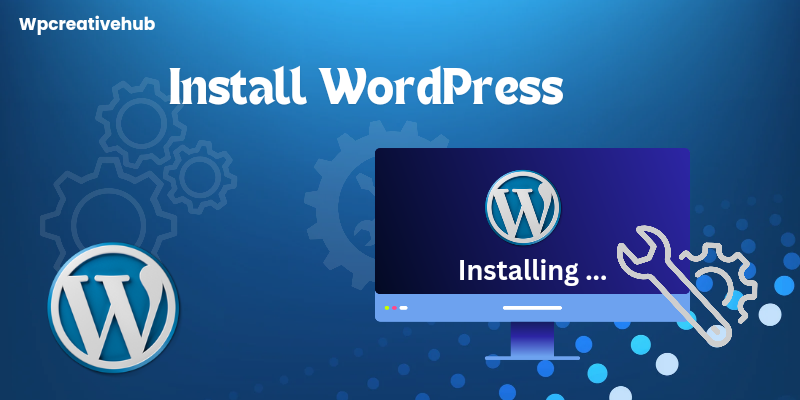
The majority of hosting companies provide for one-click WordPress installation, which streamlines and expedites the procedure.
3. Select and Install an E-commerce Theme
When learning how to make an e-commerce website with WordPress, selecting the appropriate theme is essential.
The general appearance and feel of your website will be determined by chosen theme.
Seek for a responsive theme made especially for websites with online stores.
Popular themes include Astra, OceanWP, and ShopIsle.

How to Install a Theme
- Open the WordPress dashboard and log in.
- Go to Themes > Appearance.
- Select “Add New” and look for the theme you want.
- Select “Install” and subsequently “Activate”.
4. Install Essential Plugins
To increase the functionality of your e-commerce website, plugins are essential.
The following plugins are necessary for anyone learning how to make an e-commerce website with WordPress:
WooCommerce
The most widely used WordPress e-commerce plugin is called WooCommerce. It turns your WordPress website into an online store with all the features it needs.
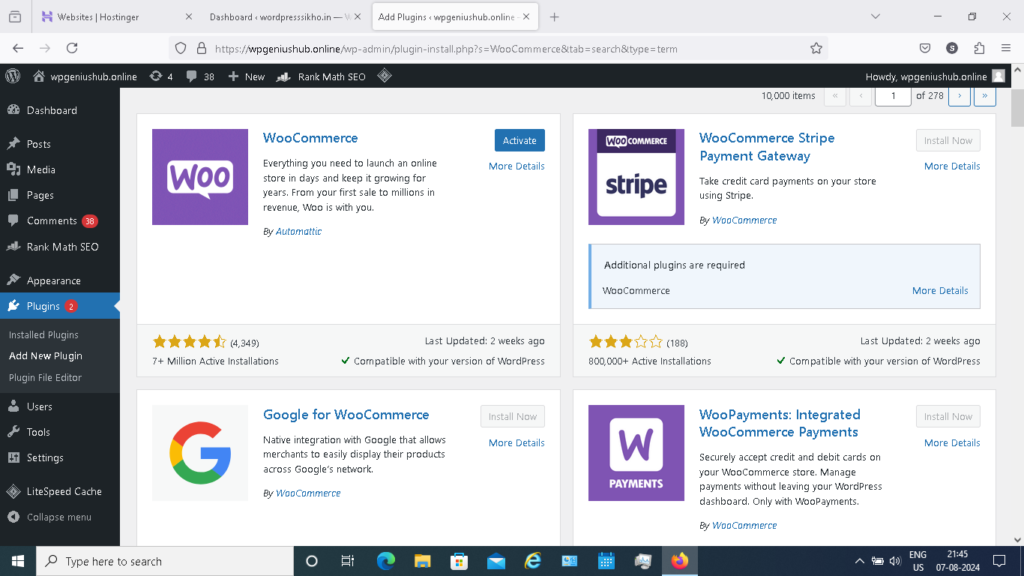
- Go to Plugins > Add New from there.
- Look up “WooCommerce”.
- After selecting “Install Now,” select “Activate”.
Other Essential Plugins
- Yoast SEO: Optimize your site for search engine.
- Wordfence Security: Protect your website from harmful attacks.
- WP Super Cache: Enhance your website speed.
- UpdraftPlus: Backup your website data.
5. Configure WooCommerce Settings
Configuring the WooCommerce settings comes next in the WordPress e-commerce website creation process after installing WooCommerce.
In order to establish your store’s settings, such as currency, payment methods, and delivery choices, WooCommerce will walk you through a setup process.
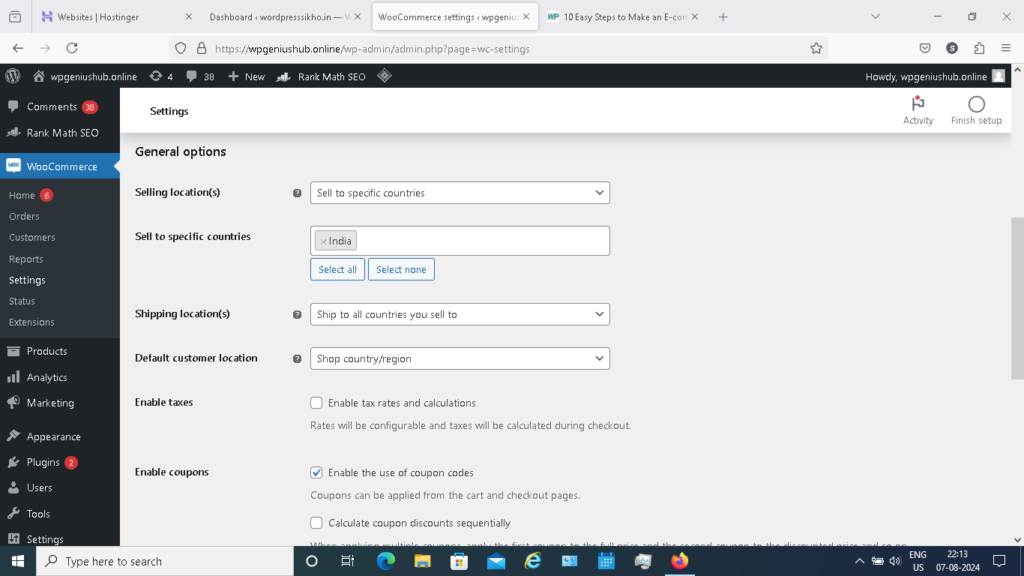
6. Add Products to Your Store
One of the most important steps to make an e-commerce website with WordPress is adding products.
Setting prices, maintaining inventory, and adding products are all made simple by WooCommerce.
How to Add a Product
- Navigate to Products > Add New.
- Enter the product name, description, and other details.
- Set the product price and inventory status.
- Upload product images.5. Click “Publish”.
7. Customise Your E-commerce Website
Using WordPress to create an e-commerce website requires customizing your website. Create a attractive homepage, change the theme settings, and add a logo to your website to make it reflect your brand.
8. Set Up Payment Gateways
Payment gateway setup is a crucial part of creating an e-commerce website using WordPress. WooCommerce accepts a number of payment options, such as direct bank transfers, Stripe, and PayPal. Select and set up the payment gateways in the WooCommerce settings that best fit your company’s requirements.
9. Optimize Your Website for SEO
To increase traffic to your e-commerce website, SEO is essential. Understanding how to optimize your content and site structure for search engines is crucial while learning how to make an e-commerce website with WordPress.
SEO Tips
- Use relevant keywords in your product descriptions and titles.
- Optimize images by using alt tags and compressing file sizes.
- Create engaging meta descriptions.
- Use internal linking to improve website navigation.
- Ensure your website loads quickly.
10. Launch Your E-commerce Website
It’s time to publish your website after completing all the steps in our WordPress e-commerce website creation guide.
Make sure everything is functioning properly on your website by extensively testing it before going live.
Verify that your website is mobile-friendly, test the checkout process, and look for any broken links.
Post-Launch: Marketing and Maintenance
The road doesn’t end when your e-commerce website launches. Constant promotion and upkeep are essential to your online store’s success.
Marketing Strategies
- Social Media Marketing: Promote your product on social media platforms like Facebook, Instagram, and Twitter.
- Email Marketing: Build an email list and send regular newsletters and promotions.
- Content Marketing: Create valuable content related to your products to attract and engage customers.
- Paid Advertising: Invest in the google ads and social media ads to drive targeted traffic to your website.
Maintenance Tips
- Regularly update WordPress, themes, and plugins.
- Backup your website regularly.
- Monitor your website’s performance and Security.
- Keep your inventory and product listings up to date.
Conclusion
Using WordPress to make an e-commerce website is a worthwhile endeavor that can expand your customer base and help you expand your business.
You can create a polished, useful, and search engine optimization-optimized online store by following this thorough instruction on how to make an e-commerce website with WordPress.
Recall that the secret to success is constant learning and adjustment to stay up to date with the ever changing digital environment.
FAQs
1. What are the benefits of using WordPress to create an e-commerce website?
WordPress offers a user-friendly interface, extensive customization options, and thousands of plugins and themes. It’s SEO-friendly and has a large community for support. With WooCommerce, you can easily transform your WordPress site into a fully functional e-commerce store.
2. Do I need coding knowledge to make an e-commerce website with WordPress?
No, you don’t need coding knowledge to create an e-commerce website with WordPress. The platform is designed to be user-friendly, and with the help of themes and plugins like WooCommerce, you can build a professional online store without any coding.
3. Which e-commerce plugin should I use with WordPress?
WooCommerce is the most popular and widely used e-commerce plugin for WordPress. It’s free, highly customizable, and offers a range of features to manage products, payments, and shipping.
4. How much does it cost to build an e-commerce website with WordPress?
The cost of building an e-commerce website with WordPress can vary. Expenses may include domain registration, hosting, premium themes, and plugins. While it’s possible to create a basic site with minimal costs, advanced features and customization may require additional investment.
5. Can I use any WordPress theme for my e-commerce website?
While you can technically use any theme, it’s recommended to choose a theme specifically designed for e-commerce. These themes are optimized for online stores, offering features like product galleries, shopping carts, and responsive design.
6. How do I ensure my WordPress e-commerce site is secure?
To secure your WordPress e-commerce site, use a reputable hosting provider, install security plugins like Wordfence, keep WordPress and all plugins updated, use strong passwords, and regularly back up your site.
7. What payment gateways can I integrate with my WordPress e-commerce website?
WooCommerce supports a variety of payment gateways, including PayPal, Stripe, and direct bank transfers. You can also add other payment options through additional plugins.
8. How can I optimize my e-commerce website for SEO?
To optimize your e-commerce site for SEO, use relevant keywords in your content, optimize product images with alt text, create engaging meta descriptions, and use an SEO plugin like Yoast SEO. Additionally, ensure your site loads quickly and is mobile-friendly.
9. Is WordPress suitable for large e-commerce websites?
Yes, WordPress is scalable and can handle large e-commerce websites. With the right hosting, themes, and plugins, you can create a robust online store that manages thousands of products and high traffic.
10. How do I manage inventory on my WordPress e-commerce site?
WooCommerce provides built-in inventory management features. You can track stock levels, set low-stock notifications, and manage backorders directly from the WordPress dashboard.
11. Can I add multiple languages to my WordPress e-commerce website?
Yes, you can create a multilingual e-commerce site using plugins like WPML or Polylang, which allow you to translate your content, products, and checkout process into multiple languages.
12. What should I do if I encounter issues while building my WordPress e-commerce site?
If you encounter issues, you can seek help from the WordPress support forums, consult tutorials, or hire a professional developer. Additionally, many themes and plugins offer dedicated support for troubleshooting.
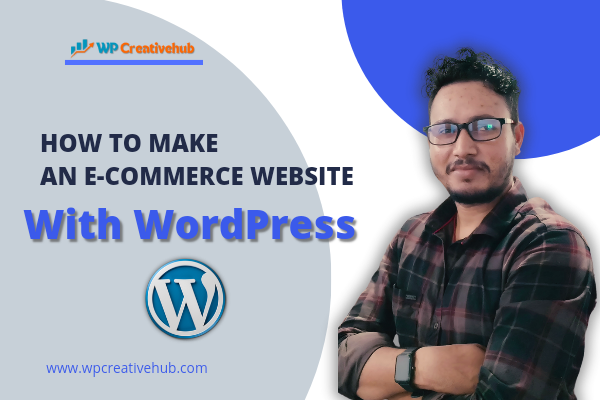
Your article helped me a lot, is there any more related content? Thanks! https://accounts.binance.com/pt-PT/register?ref=DB40ITMB
Your article helped me a lot, is there any more related content? Thanks!
Your article helped me a lot, is there any more related content? Thanks!
Thanks for sharing. I read many of your blog posts, cool, your blog is very good.
Your article helped me a lot, is there any more related content? Thanks!
Your article helped me a lot, is there any more related content? Thanks!
Can you be more specific about the content of your article? After reading it, I still have some doubts. Hope you can help me.
Thanks for sharing. I read many of your blog posts, cool, your blog is very good.
Thanks for sharing. I read many of your blog posts, cool, your blog is very good.